Meet the Staff
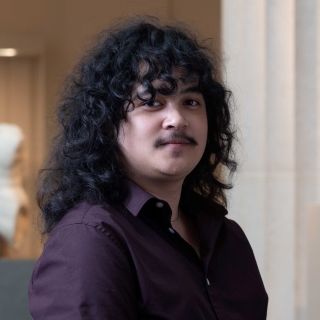
Christian Derek Aguilar
Christian Derek Aguilar joined The Met’s Preventive Conservation Science Laboratory in 2023 as a Senior Research Assistant. There he conducts scientific analyses focused on preventive conservation such as display case leak testing, environmental monitoring, materials analysis (Oddy and microchemical testing), and anoxic treatments. He holds a BS in chemistry and studio art from the University of South Carolina. Christian previously worked at Pace Analytical quantifying levels of volatile organic compounds (VOCs) in soil and water using gas chromatography mass spectrometry techniques.

Julie Arslanoglu
Julie Arslanoglu joined the department in 2006. She investigates paints, coatings, adhesives, and the organic materials of artworks across all ages using mass-spectrometric and immunological techniques, with emphasis on natural and synthetic polymer identification and degradation. Her education and career bridge the conservation and science worlds, as she holds both an MSc in organic chemistry from the Pennsylvania State University and a postgraduate degree in paintings conservation from the Courtauld Institute of Art. She has worked at the Getty Conservation Institute, the Victoria & Albert Museum, the University of Texas at San Antonio, and the National Institutes of Health. She is co-founder of Art Bio Matters and ARCHE.
Galluzzi, Francesca, Chaignepain, Stéphane, Arslanoglu, Julie and Tokarski, Caroline. “Hydrogen‑deuterium exchange mass spectrometry to study interactions and conformational changes of proteins in paints.” Biophysical Chemistry 289 (2022).
Pozzi, Federica, Arslanoglu, Julie, Cesaratto, Anna, and Skopek, Matthew. “How do you say ‘Bocour’ in French? The Work of Carmen Herrera and Acrylic Paints in Post-War Europe.” In Journal of Cultural Heritage (2018).
Granzotto, Clara, Sutherland, Kenneth, Arslanoglu, Julie, and Ferguson, Glenn A. “Discrimination of Acacia gums by MALDI-TOF MS: Applications to Micro-Samples from Works of Art.” Microchemical Journal (2018).
ResearchGate: Publications by Julie Arslanoglu
Academia.edu: Publications by Julie Arslanoglu

Elena Basso
Elena Basso leads the Network Initiative for Conservation Science (NICS), a pilot program aiming to support institutions that do not have access to a state-of-the-art scientific research facility. She received her PhD in Earth Sciences from the University of Pavia, Italy, in 2004, where she pursued her academic career, prior to joining The Met in 2017. In 2014, Elena was awerded an A. W. Mellon senior fellowship in Conservation Science at The Met, focusing her research on the archaeometry of early/middle Islamic Sgraffito ware from Nishapur, Iran. Elena is specialized in archaeometric studies of archaeological and historic artefacts, such as stones, ceramics, glass, mortars, stuccoes, and she expanded her competences to metalworks and artists’ materials in paintings.
Pozzi, Federica, Arslanoglu, Julie, Basso, Elena, Centeno, Silvia A., Duvernois, Isabelle. “A pioneer of acrylic painting: new insights into Carmen Herrera’s creative process and studio practice.” Heritage Science, 9 (2021): 131.
Basso, Elena, Pozzi, Federica, Keister, Jessica, Cronin, Elisabeth. “Improved Positives and Preliminary Photographs: A Technical Study of the New York Public Library’s Arctic Exploration Album.” Heritage Science, 9 (2021): 34.
Basso, Elena, Pozzi, Federica, Reiley, Matthew C. “The Samuel F. B. Morse Statue in Central Park: Scientific Study and Laser Cleaning of a 19th-Century American Outdoor Bronze Monument.” Heritage Science, 8 (2020): 81.

Julia Bakker-Arkema
Julia Bakker-Arkema joined the Met in 2022 as part of the IMLS grant to “Develop Damage Thresholds and a New Tool for Standardizing Material Tests for Cultural Heritage Institutions.” With the preventive conservation group, she employs gas chromatography-mass spectrometry, Raman spectroscopy, and X-ray diffraction among other analytical techniques to identify and quantify the chemicals off-gassed from preservation materials, and their corrosion products on metal surfaces. She earned her PhD in Chemistry in 2020 from the University of Colorado at Boulder where her research focused on reactions of volatile organic compounds in the atmosphere.
Bakker-Arkema, Julia G. and Ziemann, Paul J. “Measurements of Kinetics and Equilibria for the Condensed Phase Reactions of Hydroperoxides with Carbonyls to Form Peroxyhemiacetals.” ACS Earth and Space Chemistry, 4, 3 (2020): 467–475.
Bakker-Arkema, Julia G. and Ziemann, Paul J. “Minimizing Errors in Measured Yields of Particle-Phase Products Formed in Environmental Chamber Reactions: Revisiting the Yields of β-Hydroxynitrates Formed from 1-Alkene + OH/NOx Reactions.” ACS Earth and Space Chemistry, 5, 3 (2021): 690–702.
Bakker-Arkema, Julia G. and Ziemann, Paul J. “Comprehensive Analysis of Products and the Development of a Quantitative Mechanism for the OH Radical-Initiated Oxidation of 1-Alkenes in the Presence of NOx.” Journal of Physical Chemistry A, 125, 26 (2021): 5829–5840.

Eric Breitung
Eric Breitung focuses on modern preservation materials and museum environment issues. He earned a PhD in physical organic chemistry from the University of Wisconsin-Madison. He worked in the polymer materials laboratory on thin films and coatings at General Electric’s Research and Development Center for 10 years, during which he spent one year as an Andrew W. Mellon Fellow at The Met. He then worked on textile dye analysis at the Freer Gallery of the Smithsonian Institution, followed by becoming senior scientist at the Library of Congress. There he focused on modern materials and development of materials analysis tools.
E.R. Long, A. Bone, E.M. Breitung, D. Thickett, J. Grau-Bove, “Automated corrosion detection in Oddy test coupons using convolutional neural networks”, Heritage Science, 2022, 10(1), 1-16.
D. Tamburnini, E.M. Breitung, C. Mori, T. Kotajima, M.L. Clarke, B. McCarthy, “Exploring the transition from natural to synthetic dyes in the production of 19th-century Asian ikat textiles”, Heritage Science, 2020, 8(1):114, 1-27.
C.H. Stephens & E.M. Breitung, “Impact of volatile organic compounds (VOCs) from acrylic double-sided pressure-sensitive adhesives (PSAs) on metals found in cultural heritage”, Polymer Degradation and Stability, 2021, 193, 1-8.

Federico Carò
Federico Carò received his PhD in earth science from the University of Pavia, Italy, where he worked on the characterization of natural and artificial building materials. At The Met, he investigates inorganic materials and techniques employed in artistic production, in close collaboration with conservators and curators. Particularly, his research interests focus on the mineralogical, petrographic, and geochemical characterization of stone and other geological materials in provenance and conservation studies. Since 2007, he has been involved in the study of Southeast Asian sculptural and architectural stone materials.
Carò, Federico, “Non-invasive XRF analysis of ancient Egyptian and near Eastern turquoise: A pilot study.” Journal of Archaeological Science: Reports, 36 (2021): 102893.
Carò, Federico, Centeno, Silvia, and D. Mahon. “Painting with Recycled Materials: On the morphology of calcite pseudomorphs as evidence of the use of wood ash residues in Baroque paintings.” Heritage Science, 6 (2018):3.
Carò, Federico, and Janet Douglas. “Nature and Provenance of the Sandstone Used for Bayon Style Sculptures Produced During the Reign of Jayavarman VII.” Journal of Archaeological Science, 40 (2013): 723–734.
ResearchGate: Publications by Federico Carò
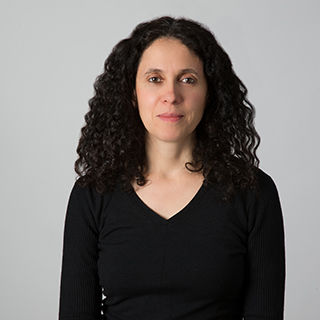
Silvia Centeno
Silvia A. Centeno focuses on artists' materials and techniques and deterioration processes in paintings, photographs, and works of art on paper. She received a PhD in chemistry from Universidad Nacional de La Plata, Argentina, and started at The Met as an L. W. Frohlich Fellow to study unusual gilding techniques in Pre-Columbian metalwork. She has published and lectured on a number of topics, including pigment- and platinum-based photographic processes, daguerreotypes, heavy-metal soap deterioration in oil paintings, modern paints, early lithographic inks, and Renaissance paintings. She currently leads interdisciplinary team projects working on the elucidation of nineteenth-century photographic processes and on the deterioration of oil paintings.
Centeno, Silvia A., Mahon, Dorothy, Carò, Federico, Pullins, David. “Discovering the evolution of Jacques-Louis David’s portrait of Antoine-Laurent and Marie-Anne Pierrette Paulze Lavoisier.” Heritage Science, 9 (2021): 84. https://doi.org/10.1186/s40494-021-00551-y.
Centeno, Silvia A. “The Spectroscopic Study of Pigments and Binders in Works of Art,” In J.M. Madariaga Ed. Analytical Strategies for Cultural Heritage Materials and their Degradation. Cambridge, UK: The Royal Society of Chemistry (2021): 183–200
Centeno, Silvia A., Mahon, Dorothy, Carò, Federico, and Lazarte Luna, José Luis. “New light on the use of wood ash residues in the ground preparations of Baroque paintings from Spain, North and South America.” In A. H. Christensen, A. Jager and J.H. Townsend (eds.) Ground Layers in European Painting 1550–1750. London and Copenhagen: Archetype Publications and CATS 28 (2020): 21–30.
ResearchGate: Publications by Silvia A. Centeno
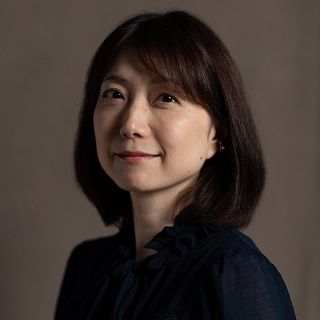
Hitomi Fujii
Hitomi Fujii joined The Met in 2023 as a staff member for the Network Initiative for Conservation Science (NICS). She holds a Ph.D. in analytical chemistry applied to wine and oil residues in Roman Amphorae from Avignon University, France. She worked on the organic analysis of heritage objects upon request from French Museums, notably the Louvre Museum, at the Center of Research and Restoration of the French Museum (C2RMF) from 2018 to 2022. She also acquired a three-year museum worker experience at the Ghibli Animation Museum in Japan. Her research identifies organic materials such as food residues, natural and synthetic resin, plant gum, wax and shellac with gas chromatography-mass spectrometry and infrared spectrometry.
Fujii, Hitomi, Sophie Krausz, Fabienne Olmer, Carole Mathe, and Cathy Vieillescazes. “Analysis of organic residues from the Châteaumeillant oppidum (Cher, France) using GC–MS.” Journal of Cultural Heritage 51 (2021): 50–58.
Dutoit, Charles E., Laurent Binet, Hitomi Fujii, Agnes Lattuati-Derieux, and Didier Gourier. “Nondestructive Analysis of Mummification Balms in Ancient Egypt Based on EPR of Vanadyl and Organic Radical Markers of Bitumen.” Analytical Chemistry 92, no. 23 (2020): 15445–15453.
Fujii, Hitomi, Jean-Baptiste Mazzitelli, Dauren Adilbekov, Fabienne Olmer, Carole Mathe, and Cathy Vieillescazes. “FT-IR and GC–MS analyses of Dressel IA amphorae from the Grand Congloué 2 wreck.” Journal of Archaeological Science: Reports 28 (2019): 102007.
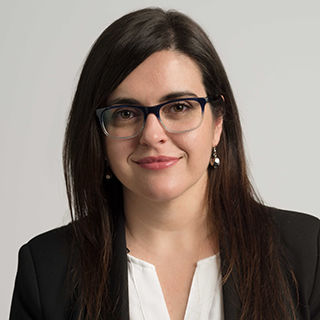
Maria Goretti Mieites Alonso
Maria Goretti Mieites Alonso joined The Met in 2018. She received an MSc in Chemistry from the University of Santiago de Compostela and holds an MBA from Cerem International Business School, Spain. Maria has acquired international experience in the fields of Quality Control and method development in Europe, and worked as adjunct professor in the Clinical Analysis Department at Jean Piaget University in Africa. At The Met, she manages the Scientific Research Department laboratories and conducts research in characterization of synthetic dyes with liquid chromatography-mass spectrometry.
Cañamares Maria Vega, Mieites-Alonso Maria Goretti, Leona Marco. “Raman, SERS and DFT analysis of the natural red dyes of Japanese origin alkannin and shikonin.” Spectrochimica Acta Part A: Molecular and Biomolecular Spectroscopy (2021).
Cañamares Maria Vega, Mieites-Alonso Maria Goretti, Leona Marco. “Fourier transform-Raman and surface-enhanced Raman spectroscopy analysis of safflower red-dyed washi paper: pH study and bands assignment.” Journal of Raman Spectroscopy, 51 (2020): 903–909.

Rose King
Rose King joined The Met's Department of Scientific Research in 2022 as part of the IMLS-funded project to ‘Develop Damage Thresholds and a New Tool for Standardizing Material Tests for Cultural Heritage Institutions’. Rose’s research focuses on the analysis of volatile and semi-volatile emissions from conservation materials, assessing their potential for damage to collection items using a variety of techniques including GCMS and molecular spectroscopy. She holds an MSc and will complete her PhD in July 2023 on additive migration from plastic materials at UCL, London, UK.
Lee, Judith & Ireland, Libby & Townsend, Joyce & Ormsby, Bronwyn & Bartoletti, Angelica & Cane, Deborah & Da Ros, Simoni & King, Rose & Gaudio, Isabella & Curran, Katherine. “Exploring the Materials and Condition of 20th-Century Dolls in Zoe Leonard’s Mouth Open, Teeth Showing 2000. Polymers, 15 (2022).
King, Rose & Grau-Bové, Josep & Curran, Katherine. (2020). “Plasticiser loss in heritage collections: its prevalence, cause, effect, and methods for analysis”. Heritage Science, 8 (2020).
Ros, Simoní & Aliev, Abil & Gaudio, Isabella & King, Rose & Pokorska, Anna & Kearney, Mark & Curran, Katherine. “Characterising plasticised cellulose acetate-based historic artefacts by NMR spectroscopy: A new approach for quantifying the degree of substitution and diethyl phthalate contents”. Polymer Degradation and Stability. 183 (2020).
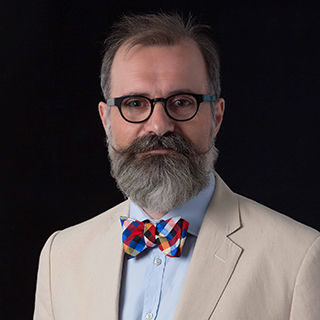
Marco Leona
Marco Leona studied in Italy where he obtained a laurea in chimica (MSc, Chemistry) and a PhD in crystallography and mineralogy from the Universita’ degli Studi di Pavia. Prior to joining The Met, Dr. Leona worked at the Freer Gallery of Art in Washington, D.C., and at the Los Angeles County Museum Art (LACMA). Dr. Leona pioneered the use of Surface Enhanced Raman spectroscopy to investigate natural and synthetic dyes in works of art. Besides his work at the Museum, he teaches analytical chemistry at the Conservation Center of New York University’s Institute of Fine Art.
Leona, Marco, and Jennifer Perry. “Beneath the Blue: A Scientific Analysis of Kōrin's Irises at Yatsuhashi.” In Impressions 37 (2016): 128–139.
Pozzi, Federica, and Marco Leona. “Surface-Enhanced Raman Spectroscopy in Art and Archaeology.” In Journal of Raman Spectroscopy 47, no. 1 (2015): 67–77.
Leona, Marco. “Microanalysis of Organic Pigments and Glazes in Polychrome Works of Art by Surface-Enhanced Resonance Raman Scattering.” In Proceedings of the National Academy of Sciences 106, no. 35 (2009): 14757–4762.
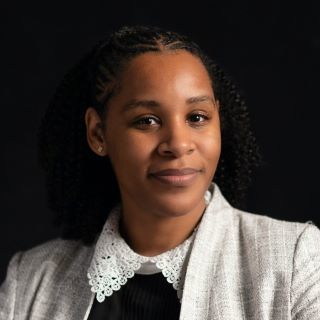
Alicia McGeachy
Alicia McGeachy joined the Network Initiative for Conservation Science as an Associate Research Scientist in May 2022. She received her PhD in Chemistry from Northwestern University and a BS in Chemistry from Spelman College. Alicia held a position as an Andrew W. Mellon postdoctoral fellow in the Department of Scientific Research (2018–20). Her primary research focused on the analysis of eighteenth century English ceramics with the goal of reconstructing the practices employed at the Chelsea Porcelain Manufactory. She continued her postdoctoral training (2020–22) with the Center for Scientific Studies in the Arts (NU-ACCESS) where she worked on various projects including colonial-era paintings of the Spanish Americas and understanding wax degradation behavior.
Vermeulen, M. et al. XRFast a new software package for processing of MA-XRF datasets using machine learning. J. Anal. At. Spectrom. 37, 2130–2143 (2022)
Vermeulen, M., Tamburini, D., McGeachy, A. C., Meyers, R. D. & Walton, M. S. Multiscale characterization of shellfish purple and other organic colorants in 20th-century traditional enredos from Oaxaca, Mexico. Dye. Pigment. 206, 110663 (2022).
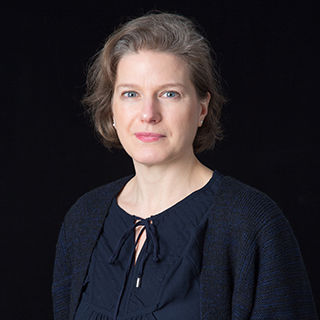
Adriana Rizzo
Adriana Rizzo joined The Met in 2004 and her main expertise is in molecular spectroscopy and gas chromatography-mass spectrometry. Her interest is the study of organic materials and their degradation, as well as conservation-related issues. Current fields of research are the assessment of plastics in museum objects and fashion, as well as the characterization of plant-exudate-use in African and South American ethnographic objects. She holds an MSc in industrial chemistry from Ca’ Foscari University of Venice, Italy, and a postgraduate diploma in the conservation of easel paintings from the Courtauld Institute of Art in London, UK.
de Sá, Susana Franca, Kim Verkens, Adriana Rizzo, lGlenn Petersen, Sarah Scaturro, Ines Correia and Madalena Carita. Synthetic Coatings in Fashion Collections: Identification and Preservation Issues. Handbook of Museum Textiles, 2, edited by Jose Seiko, Thomas Sabu, Pandit Pintu, Pandey Ritu/ 319-344. New Jersey: Wiley. 2022.
Rizzo, A and Sarah Scaturro “Already out of fashion: The fashionable rise and chemical fall of thermoplastic polyurethane”. In Transcending Boundaries: Integrated Approaches to Conservation. ICOM-CC 19th Triennial Conference Preprints, Beijing, 17–21 May 2021 Edited by J. Bridgland. Paris: International Council of Museums. 2021.
Ford, Thierry, Adriana Rizzo, Ella Hendriks, Tine Frøysaker, and Francesco Caruso. “A non-invasive screening study of varnishes applied to three paintings by Edvard Munch using portable diffuse reflectance infrared Fourier transform spectroscopy (DRIFTS).” In Heritage Science 7, no. 1 (2019): 84.
Silverman, Cathy, Adriana Rizzo and Federico Carò. “An Investigation of Eighteenth-Century English Red Japanned Furniture in the Collection of The Metropolitan Museum of Art, New York.” In Studies in Conservation 64, no. sup1 (January 2019), S126–S138.
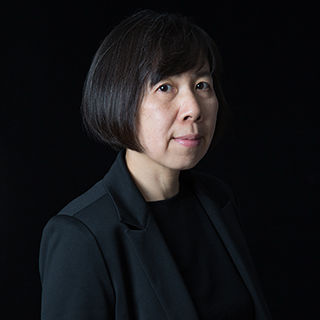
Nobuko Shibayama
Nobuko Shibayama joined The Met in 1999. She received a PhD in applied science for functionality from the Postgraduate School of the Kyoto Institute of Technology, Japan, in 1992 and a diploma in textile conservation from the Courtauld Institute of Art, London, in 1995. The focus of her work involves the use of liquid chromatography and mass spectrometry techniques to identify dyes and organic lake pigments of art objects.
Houghteling, Sylvia and Nobuko Shibayama. “Tools of the Master Dyer: Dye Materials in 17th and 18th Century South Asian Painted Cotton Textiles at The Metropolitan Museum of Art”, The Textile Museum Journal 46 (2019): 10–25
Shibayama, Nobuko, Elena Phipps, Lucy Commoner, Mark T Wypyski, and Mathieu Thoury. “Investigation of Dyed Rabbit Hair In a 16th–17th-Century Colonial Latin American Textile.” In The Diversity of Dyes in History and Archaeology, edited by Jo Kirby, 233–250. London: Archetype Publications, 2017.
Shibayama, Nobuko, Mark Wypyski, and Elisa Gagliardi-Mangilli. “Analysis of Natural Dyes and Metal Threads Used in 16th–18th Century Persian/Safavid and Indian/Mughal Velvets by HPLC-PDA and SEM-EDS to Investigate the System to Differentiate Velvets of These Two Cultures.” In Heritage Science 3, no. 1 (2015): 1–20.

Mark Wypyski
Mark Wypyski graduated from Haverford College with a combined BS/BA degree, and earned graduate degrees in science, art history, and art conservation from Rutgers University and New York University’s Institute of Fine Arts. Having worked at The Met since 1986, he specializes in the application of electron microscopy and X-ray microanalysis for the characterization of art and archaeological materials. His many research projects over the years have concentrated mainly on compositional analysis of ancient and historic glasses and enamels.
Mark Wypyski, “Chemical Analysis of Early Islamic Glass from Nishapur.” In Journal of Glass Studies 57 (2015): 121–136.
Mark Wypyski, “Compositional Study of Medieval Islamic Enameled Glass from the Metropolitan Museum of Art.” In Metropolitan Museum Studies in Art, Science, and Technology 1 (2010): 109–132.
Mark Wypyski, “The Neptune Pendant: Renaissance Jewel or Nineteenth-Century Invention?” In The Metropolitan Museum of Art Bulletin 67, no. 1 (2009): 33–39.